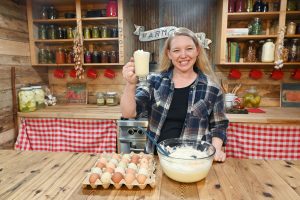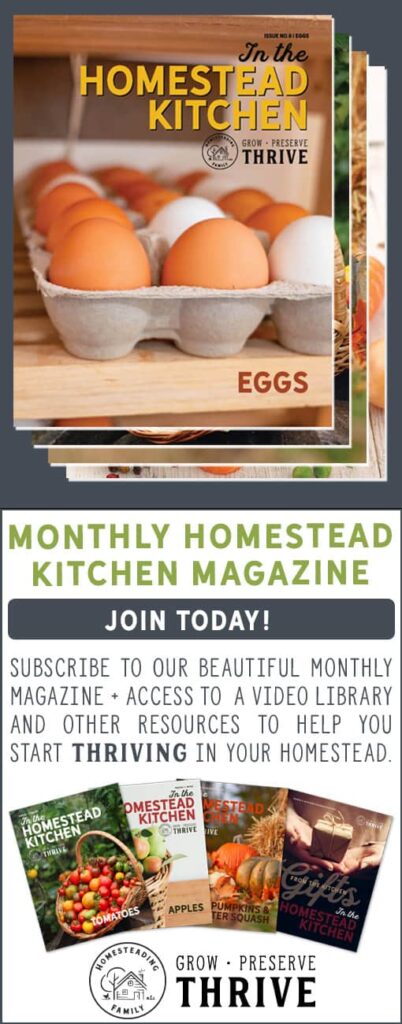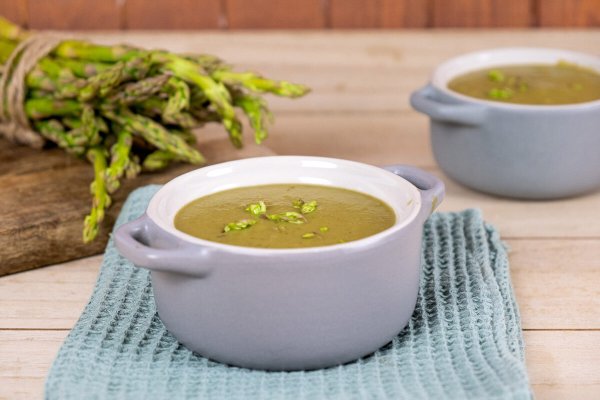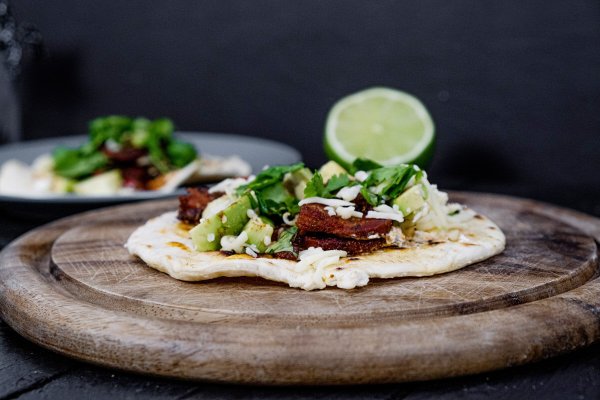
Butchering meat is sometimes a tricky topic for people to swallow, especially if they’re raising their own animals. This is most often because they have formed an attachment with that animal. Let’s discuss the logistics of raising and butchering your own meat and some tips from our years of experience.

We’ve discussed before about raising a year’s worth of meat on the homestead, as well as what to know before butchering day (especially when sending the meat off to a butcher). But in this post, we’re discussing how to get started raising and butchering meat yourself and how to know if you’re ready.
Whether we’re talking about how to beat inflation at the grocery store, where the economy is headed, how to become more self-sufficient, learning good old-fashioned skills, or just eating really healthy, high-quality food without breaking the bank, butchering your own meat can be a really important step in achieving all of those things.
Proper Perspective
It’s very important to keep a proper perspective when it comes to raising animals for meat. We can enjoy and love our animals, treat them well and take good care of them, all while realizing they serve a purpose. If we go past that realization emotionally, that’s when it gets hard.
It’s hard to divide those feelings of love and care for an animal, but also that the animal’s purpose is to provide for your family.
Death is a Part of Life
It takes death to keep life. This is true in the plant world, in the animal world and even in the human/spiritual world. Once you grasp this reality, it can become easier to grasp the task of butchering.
We all know that our animals will die at some point, whether from old age, disease, or a predator. We like to think of the quick death of our animals at the time of butchering as the most loving and humane way for them to die.
Our animals live great lives here on Riverbend. They are petted and cared for by multiple loving children daily for their whole lives. Then they are lovingly butchered by those same hands that raised them for this purpose.
That can sound harsh, but it’s a reality for us to take the lives of our animals to keep our family fed and living. And our animals die a much healthier death because they’re generally very calm and relaxed right up to the end.
A proper perspective that death is a part of life is key to making peace with this.
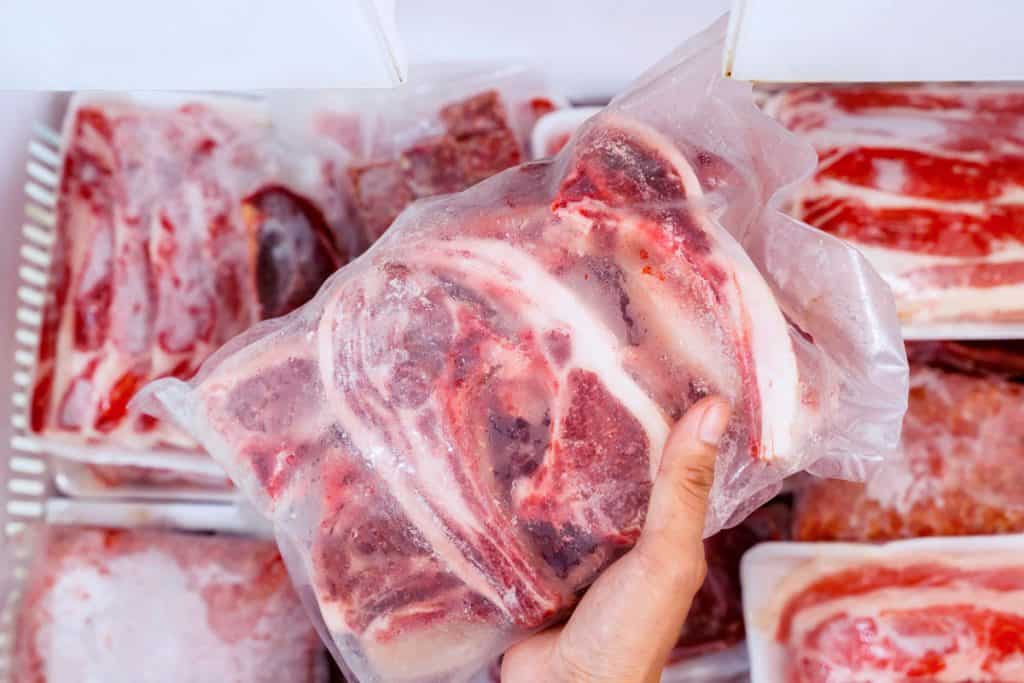
The Alternative
I’ve had multiple conversations with people that say they could never raise and butcher their own animals. However, these same people have no problem going to the grocery store and buying meat to feed their families.
Here’s the disconnect. Most of that meat from the grocery store is of animals that were raised in horrible conditions and did not live a good life. They’re generally raised in confinement-type situations, living in unhealthy environments.
When you connect this through to the humane way of raising your own meat and lovingly butchering the animals, the contrast is drastic and the value of that life that dies to feed your family is far greater.
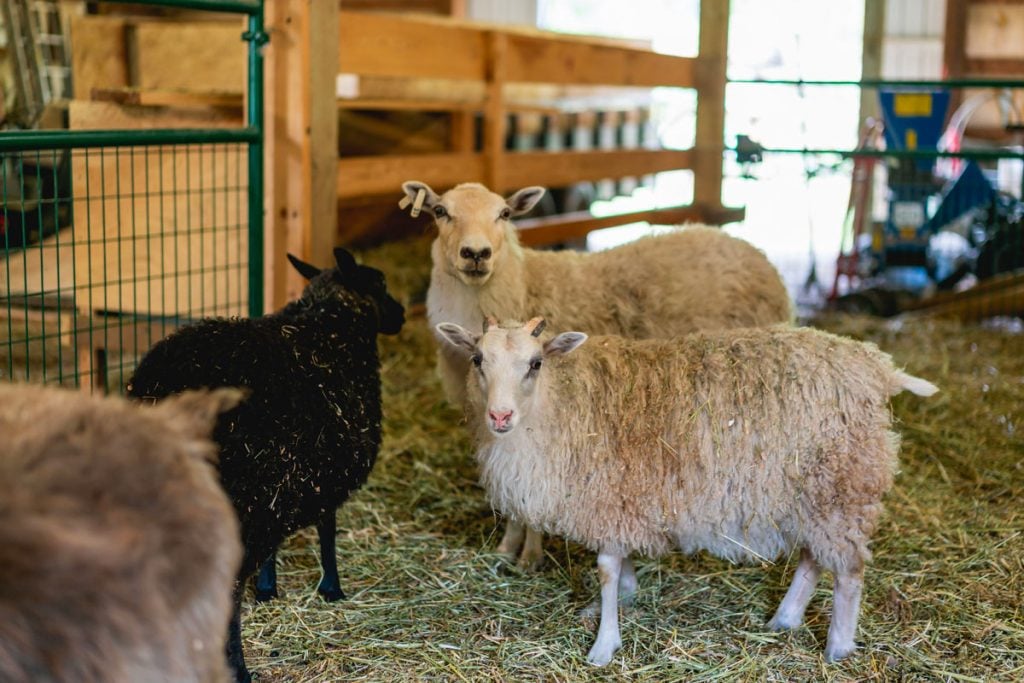
Bambi Syndrome
Many of us have been raised with Disney movies and these human-like storylines being placed into an animal world. This has made us equate human characteristics to the animals we’re raising, setting ourselves up for failure right from the start.
This is what we refer to as the “Bambi Syndrome.”
This can be understandable when you research how inhumanely animals are treated in big feedlots and commercial growing situations. But to swing too far to the “Bambi” side is also an unhealthy balance, and we believe there’s a healthy spot right in the middle.
God tells us to care for our animals, but obviously, they’re working for us and feeding us. So though we don’t want to be mistreating them, we do need the proper perspective of their role on the homestead.
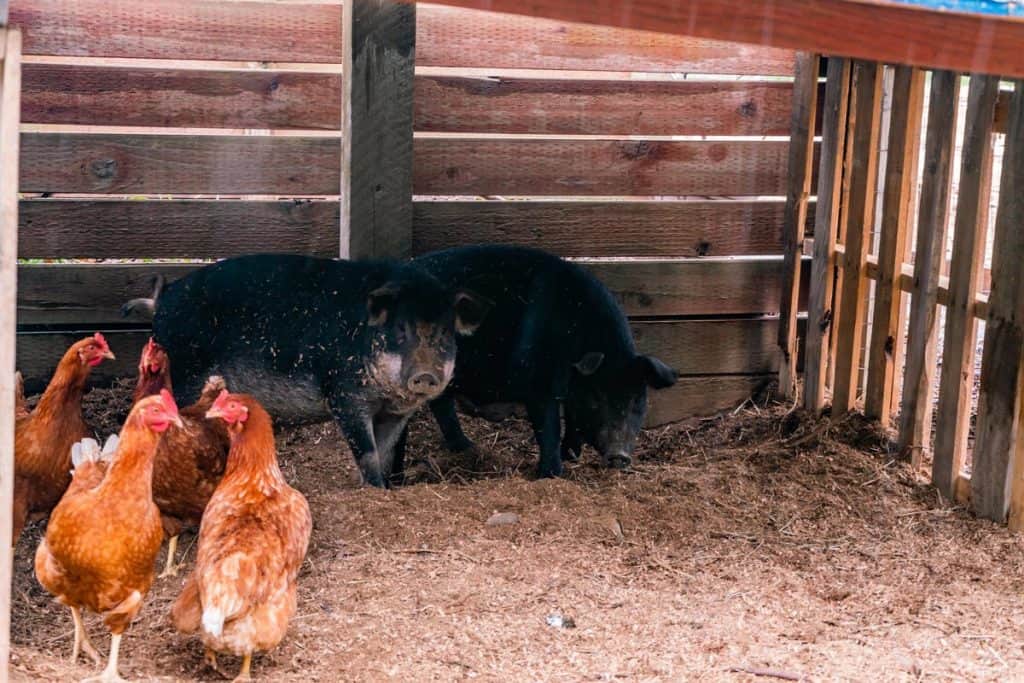
Learning How to Butcher
If you’ve never butchered an animal and are looking to learn (or curious if this is an endeavor you can take on), here are some practical steps we recommend:
Offer to Help
Put the word out there to friends and family who are raising animals that you’re willing to show up on butcher day to help, just for the experience of learning.
That’s a great way to figure out if you want to raise animals and process them yourself.
Adjust Your Expectations
An important step when learning to butcher your own meat is to change your expectations that your cuts will look like they came from a butcher shop.
Because your home tools for butchering are likely much different than a butcher would use, you’re going to have to approach the butchering process a bit differently.
When you’re faced with an entire animal, your ability to replicate those cuts is very challenging and can create unnecessary stress.
The best thing to do is to let go of those expectations and cut the meat in a way that it’s usable in the kitchen, even if that means it’s all ground. The end goal is to get meat into the freezer, not to have beautifully cut steaks.
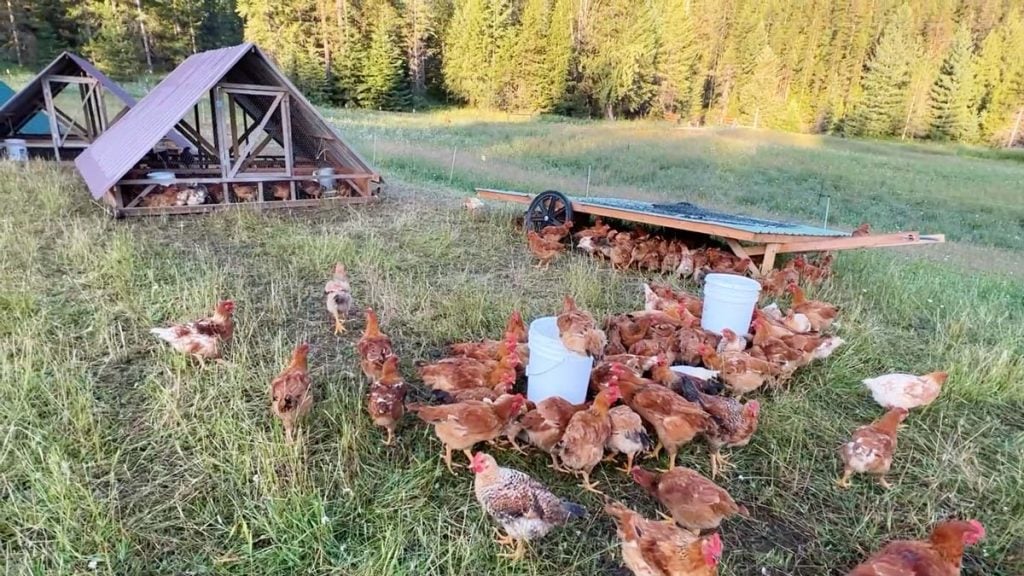
Do Your Research
Before you dive into the butchering process on your own, join a friend (as we mentioned above), or check out some YouTube videos by Brandon Sheard (who has a course on curing meat inside School of Traditional Skills) or other YouTube creators.
Watching someone butcher before you try it on your own can go a long way in improving your understanding and giving you somewhat of a roadmap to follow.
Learn to Wrap
Learning how to properly wrap and store your meat is very important. Most people want to use vacuum sealers, but we’ve had nothing but trouble with those.
Good old double layered butcher paper works great. You could also first wrap your meat in cellophane or plastic wrap, then finish with a layer of butcher paper.
The important thing is to double wrap your meat.
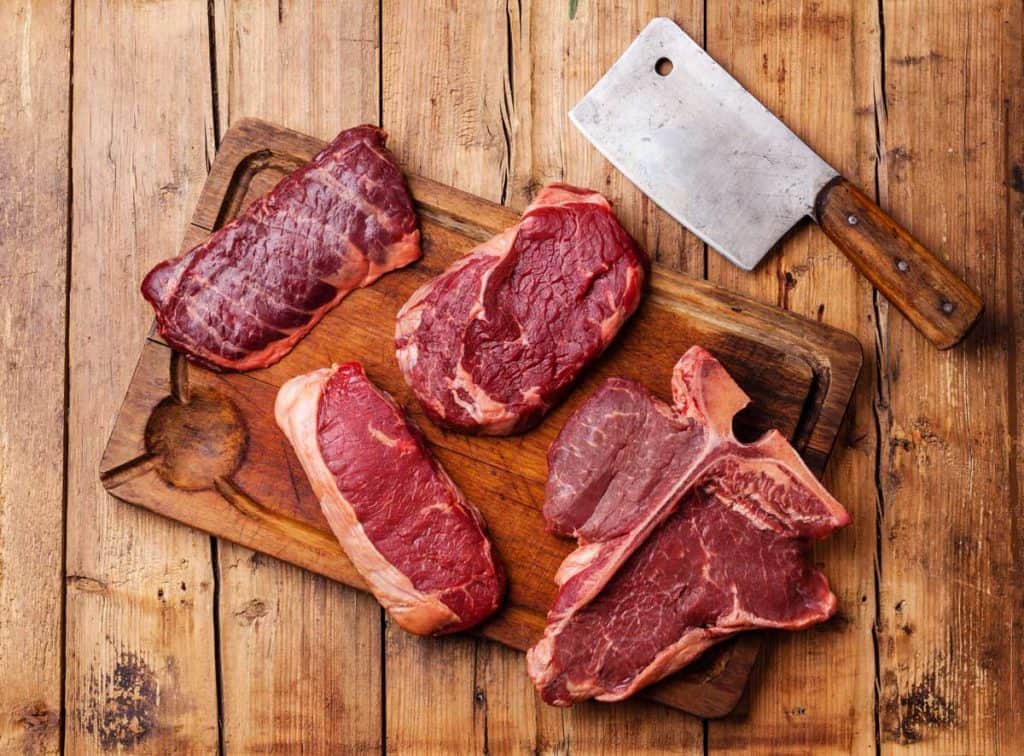
Store Properly
After properly wrapping your meat, you want to be sure you’re storing it in a good quality, reliable sub-zero freezer. This will ensure your meat will be stored properly and last for at least a year (which is the goal for most of us), and won’t become freezer burned.
Your regular refrigerator freezer is not designed to keep meat fresh for that long.
Learn to Hunt
Another way to determine if you’re ready to raise and butcher your own meat is to learn to hunt. Go out and see how you do shooting and butchering an animal in the wild. This will eliminate the connection of harvesting an animal you raised, but it will also tell you how well you do with the whole process of taking an animal’s life to feed your family.
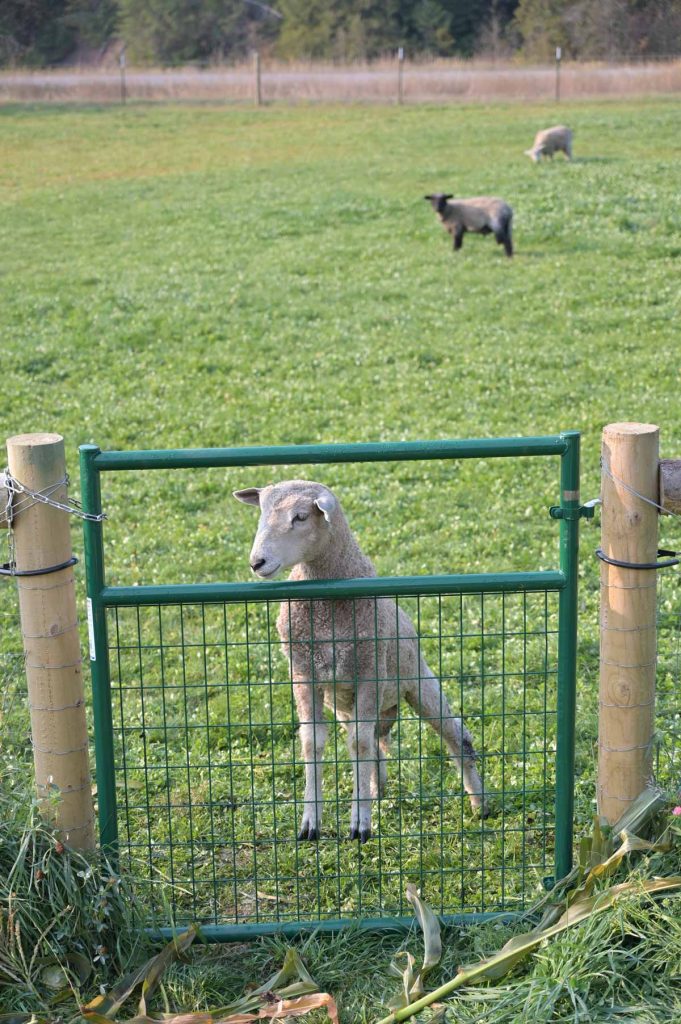
Buy an Animal
If you think the emotional connection of raising and butchering an animal will be too hard for you, another option besides hunting is to buy an animal raised by a local farmer to butcher. Then you won’t have the emotional attachment.
This is a great way to go if you want to learn how to butcher an animal and not have to deal with the emotional side of things.
This is also a great option if you don’t have enough land or the ability to raise your own animals.
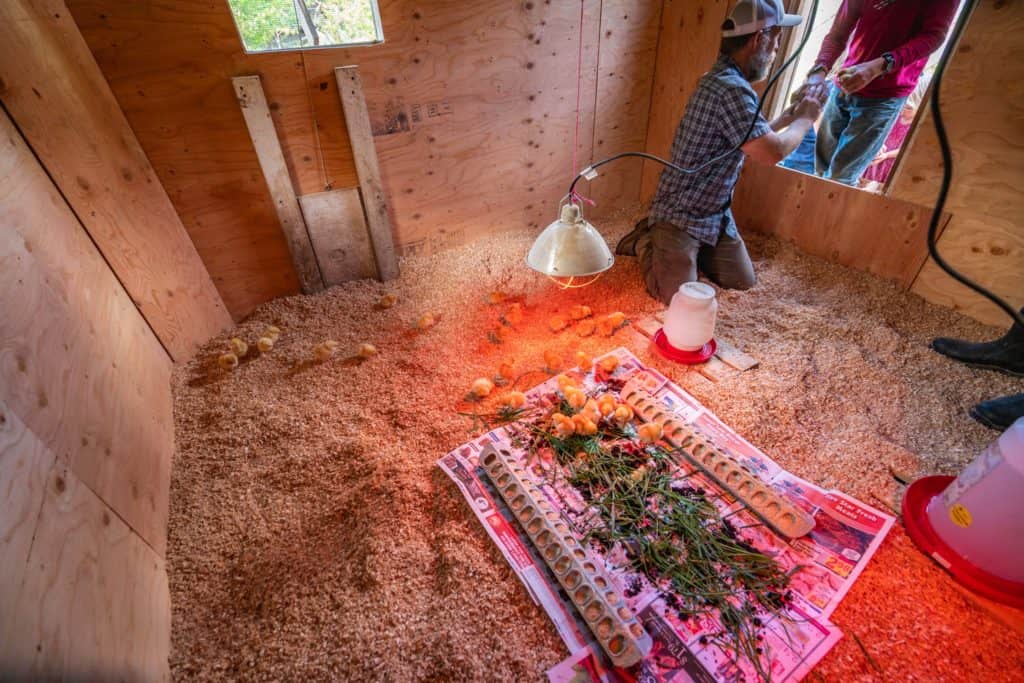
Best Animals to Start Raising
Rabbits or Meat Chickens
If you think you’re ready to start raising and butchering your own meat, we recommend you raise meat chickens or rabbits.
Meat chickens only take 6-8 weeks to raise. They’re small, easy to handle and easier to kill and clean than some of the larger animals. Read more on raising meat chickens.
Meat rabbits are the same way. Though they take about 12 weeks to raise, each rabbit will yield about three pounds of meat. By keeping a couple of breeders (called does) and a buck, you’ll have a supply of rabbit meat all year long.
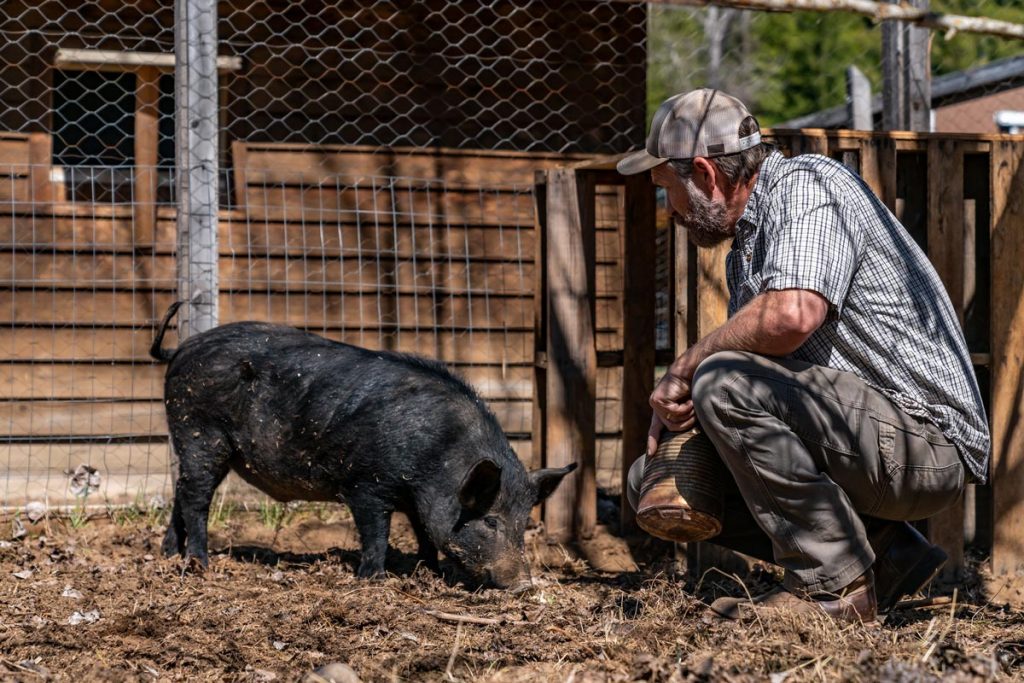
Pigs
If you’re thinking about a larger ruminant animal, pigs are a great option. We have enjoyed raising Kune Kune pigs and other breeds.
Pigs don’t require too much land, and it’s pretty easy to keep their pen clean. We do recommend you get two and raise them as a pair. They will be much happier and healthier.
The one thing to consider about the butchering process with pigs is that they don’t skin the same way as other animals, such as cows, sheep or goats.
You’ll have to decide ahead of time whether you’ll use the scalding method, which is what we prefer or to just skin them out and learn the proper way beforehand.

Sheep
If you’ve got a little more space and some pasture, then you could raise a couple of sheep. They’re easy to raise and easy to contain, as well as easy to handle for their size.
We started out in the early years by getting feeder animals. This means we would buy young sheep, get them in the spring, feed them through to the fall or winter, then process them.
Common Concerns of Butchering
One of the common concerns when butchering animals is not having the proper equipment.
This is something worth discussing because it’s like so many other things on the homestead. The process doesn’t have to be perfect.
You can usually butcher an animal with a pot of boiling water and a good knife. (It will be useful to know how to sharpen your own knives during the process.) You may also need a saw for the larger animals.
Then, as you become more efficient and advanced, add in those extra tools that make the job easier or faster. But don’t let a lack of equipment be a limiting factor.
Continue layering in ways to be more self-sufficient and less reliant on others. Put into proper perspective that all life requires death, and that raising and butchering your own animals can be the more humane route.
We really encourage you to all revive these old-fashioned skills and take back control of your family’s food.
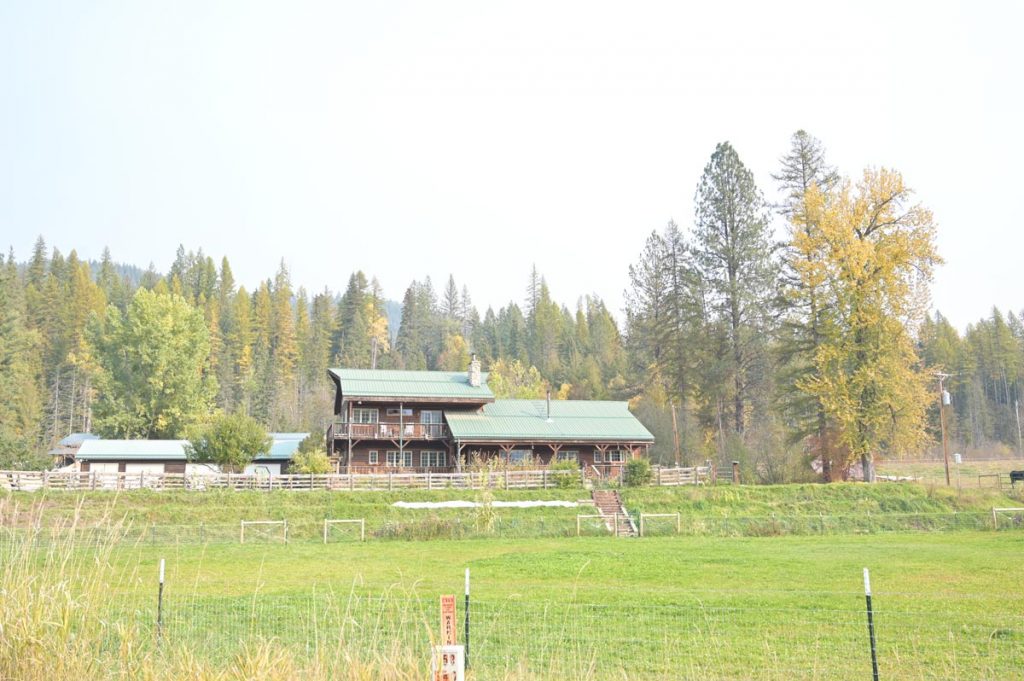
More Posts You May Enjoy
- Nutritional Benefits of Organ Meats and Cooking Tips
- Does Homesteading Save You Money?
- Our Homestead Journey (Apartment to 40 Acres)
- How to Get Started Homesteading
- 7 Things You Must Do On Your New Homestead
- 8 Things You Need to Know When Buying Homestead Property
- How to Pivot When Things Go Wrong on the Homestead
- Prepping Your Pantry for Winter
- Building Resilience with Justin Rhodes
- How to Grow a Year’s Worth of Food
Josh: Hey, guys. This is Josh-
Carolyn: And Carolyn.
Josh: ... with Homesteading Family. Welcome to this week's episode of the Pantry Chat, Food for Thought.
Carolyn: This week we are going to be talking about butchering your own livestock at your own place, actually doing it yourself, getting your hands into the process, and whether or not you can do it, how to do it, and when you should start doing it.
Josh: This is more of a need-to-know than a technically how-to. That would be a different video. We may do some more of those, but this is more just to help you get started, things to think about, how to transition into butchering your own meat from wherever you are in your journey, things like that, that are going to really help you approach this. It's a really important skill as a homesteading skill. It's something that you can apply to different phases of your homesteading journey, and something that, in the end, saves you a lot of money when you're trying to buy or raise good quality meat. Doing the butchering yourself can save you quite a bit. Generally, we found you use more of your own meat. A little harder to get some of the cuts you might be used to, but definitely, you can use more of what you've raised.
Carolyn: Well, let's be real honest right here. At this time in history, with inflation being what it is, we're watching grocery prices just soar in some cases. Meat is one of those things that is just going higher and higher. Raising your own animals and being able to butcher them at home becomes a very good way to still get that high quality food. It becomes a discussion we should all be having, I think.
Josh: Well, it does. Even if you're not able to raise your own meat yet, if you've got a little bit of a property, you could potentially even buy locally raised meat and butcher it yourself in order to save some money and get that good quality meat in the freezer. Buy it in bulk. When you buy a whole animal, you always get a better per pound price, and then you could process it yourself. That's still an option for some of you to get good quality meat into your freezer or however you're preserving it, even if you can't raise it all yet.
Carolyn: Yeah, that's a great thought. Before we dive in all the way to the main topic, some chitchat first. If you are not interested in the chitchat or you don't have time for it today, we understand. Go ahead and feel free to zip on forward a few minutes into the main topic. But what have you been up to?
Josh: I'm good. I'm tired. I'm ready for winter. You know what? First day of snow today.
Carolyn: We woke up this morning, and it was snowing.
Josh: It was snowing. We've accumulated an inch and might be getting a few more. That's fun. That's a change in season. But we've been working to get the place winterized, ready for winter. We got that barn roof on, which is really nice. So our hay, our grain, is protected. We've got some other things on the roof. Butchering. We've had two deer come in for the kids so far. Just had one come in yesterday.
Carolyn: Yeah, our daughter got her deer.
Josh: Yeah. I was helping her skin and the beginning process of that. We're into butchering. Of course, we processed turkeys and geese a few days ago. So those are in. We've still got pigs and sheep to do this year, along with hopefully quite a bit more venison. I think we've got five hunters this year, and we've got two venison in, so a bit more there. So really just thinking a lot about meat right now. This topic is relevant, at least in our household, and this time of year for a lot of people that are either hunting or processing animals. And working on the next STS class, which I'm excited about.
Carolyn: Ah. School of Traditional Skills.
Josh: Yeah. Can we tease that?
Carolyn: We can tease that.
Josh: I think we can tease that.
Carolyn: If you guys have been following along, you'll know that School of Traditional Skills is the other class platform that we run-
Josh: And we launched. Yeah.
Carolyn: ... with some other creators, which is really exciting. So we're getting ready to release a new class over there.
Josh: Well, we're getting ready to film it. It won't be released until January.
Carolyn: Oh. Well, we're doing both. We're releasing a class.
Josh: Oh, I'm sorry.
Carolyn: And we're filming a class.
Josh: Yeah. Okay. We're coming at it from two different angles. That's right. Yeah. A new class is getting ready to release on Sourdough Bread by Maureen Diaz. If you're not familiar with her, God's Good Table, check her out. She's worked with Sally Fallon for a lot of years and Weston A Price, and been making sourdough for 25-30 years. That's great. But I'm also excited about the class we're about to film here in a couple weeks on Herbal First Aid.
Carolyn: This is with Doctor Patrick Jones. A lot of you guys remember when he came on here. He did a couple Pantry Chats with us. He did a couple how-to videos with us. Homegrown Herbalist. He's going to be teaching a full class for School of Traditional Skills.
Josh: On herbal first aid. Really, really cool. Great thing for the homestead. We all need good first aid skills. This is just going to have some core first aid in it-
Carolyn: This is exciting.
Josh: ... but from using herbal medicine, and simple herbal medicine that you can grow yourself or easily acquire for treating a lot of different things. So really excited about that. We'll be filming that in a couple weeks. Of course, we'll keep you updated. If you're not on the STS email list, get over there. That's where you're going to really stay up to date on things.
Carolyn: Right.
Josh: If you're not a member yet, check that out because we've already got a lot of great instructors there.
Carolyn: Yeah. Just because we're filming it here in the next few weeks does not mean that it's going to release in the next few weeks.
Josh: No. Yeah. January, at soonest.
Carolyn: It takes a few months.
Josh: Yeah. Yeah. Anyways, that's what I've been up to. What about you? What's going on?
Carolyn: Right. Just the same thing of, okay, now it's real. Winter's coming. We're here.
Josh: People are transitioning into the house more.
Carolyn: Yeah. We've got a lot more people in house all day, which, if you work at home and you homeschool, and you everything home, and then the season changes this drastically, this has been almost an extended summer. We had such a pleasant fall.
Josh: It really was. It went long.
Carolyn: It went a really long time. Everybody was still outside riding bikes, jumping on the trampoline, playing out in the yard, sleeping out at nights, right until just a week or two ago.
Josh: A week and a half ago.
Carolyn: Yeah. Then all of a sudden, now it's like everybody is inside almost all the time except for the little forays out into the snow. But it's cold. We have 10 degree weather on the forecast coming up here. You get a little chilly. The whole atmosphere of the house changes. It always takes me a little bit of adjustment to be like ... You can't as easily say, "Hey, everybody, go outside," when it starts to get a lot.
Josh: Go use that energy on the trampoline or something.
Carolyn: Absolutely. Now it's like, "I have to come up with creative ways to keep them engaged and responsive." One of those ways is we seriously put a lot of energy diving into school. Obviously, we start school a little bit late because we live on the agricultural calendar a lot more than most people do. Definitely a lot more than the average school system calendar is. So we take this time to make up a little bit of that difference and to really focus, get ahead, get extra done. But it is a shift for everybody from this kind of work and projects all day and free playtime outside, to all of a sudden inside and focused on something like books. Anyways, that always takes a little bit of navigation for Mom to keep maybe my own attitude in the right place, but also the rest of the house's attitude just cheerful and relaxed, even though we've got to switch gears.
Josh: Yeah. That energy, the volume goes through the roof. Even for me working in the house, I'm working in the house more on the computer and things, and people are asking questions more, and the volume's louder. It just takes a little bit of adjustment to get into that flow.
Carolyn: It does. It does. But it's good.
Josh: But it's good. Love wintertime.
Carolyn: Yeah, we're doing that. Then I'm afraid I've made a big mistake here this year. This one's stressing me out a little bit, actually. That is that I love my flowers, and I love my bulbs. This spring, when I was watching all my bulbs bloom and thinking about where else I want all the bulbs in the yard, I ordered way too many bulbs. Some women have problems with clothing and shoe buying.
Josh: I think she's pretty cool. She's not asking to go to Nordstrom. She just wants to plant flowers.
Carolyn: Make sure I do not have a credit card that attaches to a bulb store.
Josh: Or any kind of seed store.
Carolyn: Or seeds or plants. It's dangerous. But here's the thing. When the bulb stores see where we live, they do zones by zip code. They think we live in a much warmer zone than our little microclimate right here. So I wasn't thinking that far ahead to make a little note in the ordering note that says, "Hey, even though you think we're in zone six, we're really not. So please send this way earlier than you want to send it." So my bulbs didn't get here until ... They started trickling in, but they didn't all get here until just last week. Now there's snow on the ground, and we have 10 degree forecast weather. The ground's about to freeze. I have all these bulbs sitting in their boxes nicely chilled in the garage, but they should be tucked into the ground. I'm honestly not really sure what to do about it besides to just pray we have some nice weather coming where I can go tuck them in really fast, even if it means putting them on the surface of the ground and covering them with compost.
Josh: I think we can do that. I think we can do just a sheet-mulched garden here, where we show in the video like we did to your cottage garden. We take down the grass that's on the edge of the driveway and do a row, lay down some of the paper, and put the bulbs right down and cover a good layer of compost. Then we may need a good layer of shavings, wood chips. I think the challenge there is that's going to end up being mounded in a spot that's not really mounded. It doesn't match. But that may be what we need to do. I think they'll be okay if we just give them a good-
Carolyn: Give it a go like that.
Josh: Give it a go. Yeah.
Carolyn: I don't know. If you guys have any great advice for me, I know some of you guys are really knowledgeable about these things. Please let me know. Can they sit in the garage? Can I tuck them in first thing in the spring?
Josh: Haven't we done that? I feel like we had some once that had to winter through. We got them late. It's always a challenge here with the bulb companies, like you were saying. I feel like we got some that we ended up having to winter through in the box. I think they did all right.
Carolyn: I don't recall if we did. Anyways, if you have great advice for me, please put it in the comments because I'd love to hear it.
Josh: All right. To make sure we get through to everything today, that's enough about you and me. Let's move on to one of our subscribers here. Question of the day from Mama Mode on introduction to dehydrating, preservation 101. I remember Grandma canned, and opening up some things, there was wax on top of the food. Why was that? What foods needed that? Why am I not seeing that anymore?
Carolyn: Ah. That is an old-fashioned method of food preservation generally reserved only for high-acid foods. That would go right along with the open kettle method of canning, which is no longer recommended, which is why you're not seeing it anymore. Historically, you would take something like a high-acid fruit preserve, like a jam or a jelly. You would get that boiling in your pot, and then you would very quickly get it into a sterilized jar. Then, in order to keep oxygen from hitting it or air from getting into it, along with mold spores or yeast or things like that, that can grow in that acidic environment, you would top it with a melted paraffin wax.
Josh: Wow.
Carolyn: That would just seal it in. A lot of people talk about their grandmas or great-grandmas doing these beautiful jams and jellies in wine goblets instead of in jars because they could decorate with them. But they would just seal the top with the paraffin.
Josh: It's kind of cool sounding.
Carolyn: It really is. It really is a fun way. Nowadays, they say not to do that because they want you to process it in the jar. As far as open kettle method goes, when it comes to high-acid foods, safely high-acid foods, vinegar, pickles, jams, jellies, things like that, the reasoning behind not doing it anymore is because you get too many seal failures. Then you can end up with mold or yeast on the top. It's important to remember that when we're dealing with these high-acid foods, bacteria cannot survive in that environment. So we're not talking about botulism. That's not a concern as long as you're well away from that 4.6 on the pH. If you do not know what I'm talking about, I have a really good free canning series that teaches all of the science behind it. We'll put the link below.
So there's no bacteria concern there. What you do have a concern with is molds and yeast. You can get it to go fermenti. If you read Anne of Green Gables, there's a part where Marilla says certain preserves have to be used up because she thinks they're starting to work. That means they're starting to go fermented, which means they're going to go alcoholic because of the amount of sugar. I would say that it's a relatively safe method if you're using high-acid foods. It's just one that's frowned on now because of the amount of failures you can get. I think you're smart enough to decide whether the amount of failures is too high for your liking or not. But the government says, "Eh, just scrap the whole thing, and process it with a fresh lid instead."
Josh: You're smart enough to look after your own best interest regardless of what they say. Just be smart about it. Yeah. Cool. Okay.
Carolyn: Good.
Josh: Well, that was fascinating. A little bit of history.
Carolyn: Yeah.
Josh: Main topic.
Carolyn: Diving right in. Butchering animals on your homestead. This is a hard thing for some people to swallow, especially if they're raising their own animals because they've gotten to know them a little bit. There becomes a little bit of an emotional attachment. I know for a lot of people, the first thing they're dealing with getting over is could I even do this? Could I even walk out and go shoot something and then butcher it and process it and then proceed to eat it?
Josh: It's a good point. I immediately think of a couple things there. One, if you are raising animals, that is having a proper perspective of the animals. We can enjoy our animals. We can love them, treat them well, take good care of them, but still realize that they have a purpose. If we emotionally go past that realization, that's where it gets hard for people. I think that's hard to divide that line of caring for them, enjoying having them around, watching them, petting them sometimes, yet still realizing that this animal has a purpose. It is here to serve us and ultimately to feed us. It does take death to continue life on in the plant world, the animal world.
Carolyn: The human world.
Josh: The human spiritual world. All of that. So we, one, have to wrestle with that and be careful how attached we get, or getting attached in the right way, I would say. Our kids, we all get attached to our animals. We love our animals, even some of the ones that we butcher. We're fond of them, and we pet them and talk to them, some of them, the smaller ones. But we still realize that they're headed somewhere. When you have that, we've watched our kids grow up with this, and they handle it very, very well. So if you're not familiar with that, that's important to divide that emotionally.
The other thing, and we were talking about this off camera, that you can do is buy an animal raised by a local farmer to start, and butcher that. You won't have that emotional attachment. That's great if you just want to learn and not deal with having raised your animal and that wrestle, but just maybe processing something that you haven't raised. You're not as attached to it. That's also a good option if you don't have the ability to raise your own animals, but you would like to get good quality meat in the freezer and save a little bit of money. Instead of buying from the farmer and then having it butchered, you could buy it from the farmer and butcher it. Even some farmers might help you with that on their property. I mean, you just have to look around.
Carolyn: That would be a step towards a more nameless unknown animal that you maybe don't have a relationship with. Right?
Josh: Right. Exactly. It's a good way to find out, do you feel like you can do this? I mean, I know you can do it, but different people, getting in this lifestyle, that can be a challenge. That's a good way to start because you haven't invested the time in the animal yet. That's a good way to just go explore that subject and get some meat in the freezer.
Carolyn: I know for me, in different parts of our history, when I have dealt with this in different ways, especially, I think, as a mom and as a woman here, I'm spending a lot of energy bringing things to life and nurturing things and keeping them alive. There's this little bit of dissonance to me, to then go kill something. But when you step back and you look at that bigger picture, and you touched on this, that, one, all life requires death to continue. Whether we're talking about the sheep out in the field and its required death of something it's eating out there. The plants are dying. You can go a long way with this. Some death of some sort is required.
But the other thing is, this animal is going to die. It's going to die one way or another. If it was out in the wild, it would probably die a miserable death, for one. Most wild animals do. They either end up starving to death at the end of their life because of a health issue, or they're chased down by a prey that really couldn't care less if it's dead all the way before they start eating it. Whereas, we know that our animals have had a great life while they've been with us. We make sure the death is extremely humane and extremely quick.
When I look at that, maybe this is a little dark for some people, but when I think about my own life and which of those two options would I choose if I had to die, I don't want to die a long, drawn out, or scary, painful death. Fast, that sounds good to me. That would be an option I think we would all choose if we were faced with that decision. So when I put it in those terms, I think, "Great life, quick, easy death, and then nourishing the next thing, which would be our bodies."
Josh: Well, which is nourishing life. Right.
Carolyn: And more life. To me, it all falls into place and becomes, in context, a much easier thing to handle.
Josh: Well, I think it's a connection that people need to make because I see a disconnect. I see people that we'll talk to about our life, or they'll hear, oh, you're butchering animals. Oh, I can never do that. But they have no problem going to the grocery store and buying a piece of meat. Well, here's the disconnect. Most of that meat from the grocery store was raised in horrible conditions. It did not have a good life. It's generally in confinement-type situations, living in unhealthy environments. The chicken, the pigs, the beef feed lots.
When you take what you're saying and if you connect that and follow through, you realize that, actually, what you're providing here, we're providing a better experience for the animal. We're providing a better ecological situation, and we're providing better food for ourselves or those that we're interacting with. I think that's just that shift that people have to get ahold of. I try to talk to people about that. They go, "Oh, you're a butcher. I could never butcher my own food." Well, wait a minute. You could, actually, if you just saw the value in it and realize that, actually, you're providing a much more valuable process for the life that is ultimately dying anyways to feed us. I think that mentality can help to just understand that.
Carolyn: I think so, too. I want to touch on something that's probably controversial. We'll get letters about this.
Josh: Okay.
Carolyn: That is, can I call it the Disney syndrome? Human storyline plots being placed into an animal world in movies. We grow up with this. We have our children watch this. It's this Bambi mentality.
Josh: Bambi syndrome.
Carolyn: The Bambi syndrome, where we really equate human characteristics to these animals. Yes, we all have our dogs. Our dogs are pretty much personalities in our family. We have these animals that really stand out to us. But even with that, even with all their quirks and their personality traits, they're not really living human lives with the plot line that they show. So we attribute all of this depth of emotion and of concern and worry and fear and things like that onto these animals, that they really just don't experience.
Josh: Well, I think that's where balance is so important, because there are these pendulums where we see humanity mistreating animals. We have these ways of raising animals that are very unhealthy, very bad for them. It's not humane. So then we tend to swing all the way over and get this over-glorified perspective about these animals and this Bambi syndrome, to just keep that wrapped up short. There's actually a place in the middle. I think it's very biblical. God tells us to care about our animals. Obviously, they're working for us. They're feeding us. So there's a balance in there where we don't have to be mistreating them, but we don't have to be getting way over here, a little woo-woo about it. There's a good balance.
Anyways, I think we do need to move on a little bit from the emotional aspect of this to how do you get started, because I think there are a few key things besides the technicals. Again, this isn't really a how to butcher. This is how to get started. Either you're going to buy an animal and you're going to bring it home and you're going to butcher it, or you're going to buy an animal and get some help from somebody if you've never done it before. A lot of farmers will help.
Carolyn: If you have the opportunity to offer up your help for free to somebody-
Josh: Great way to learn.
Carolyn: ... else who is butchering, put that out there and say, "Hey, I'm happy to come work for a full day just for the experience of learning." That is a great way to get started.
Josh: Well, that's a great way to figure out, do you really want to raise animals and process them yourself? That's a great journey to go on. You can also get that experience through hunting if you know anybody that's hunted. You can go out and hunt an animal, shoot it, bring it home, and process it that way. Or you raise your own. I think one of the key things to understand about butchering at home is that it is not going to come out like the butcher shop. That is okay.
Carolyn: It's just fine.
Josh: Here's another emotional shift, but it's very, very practical. However you're coming to this from, if you're thinking about butchering, you just need to know off the bat that it's some work and that the home shop, the tools you're going to have at home, unless you're going to set up a butcher shop, are different. So you're going to get different cuts, and you're going to go about it a little bit differently. I think you need to be okay with that, knowing that it's going to work differently and you're going to have a little bit of a different outcome.
Carolyn: This was a little almost paralyzing for me at the beginning because you get used to going to the grocery store. You're going to go get a little flank steak and a little of this and a pork cutlet, whatever it is you're going to get. But they all have these nice names. You know exactly what they're going to look like. They're always going to look the same every time you go to the grocery store. When you're faced with an entire animal, your ability to replicate that becomes ... Well, it's a challenging thing, for one, but it's also maybe not necessary, and it creates a lot of extra stress.
One of the best things that I know I've learned in the butchering process is to let go of all of that and say, "It doesn't matter what it's called. If it's a usable piece of meat that I can use in the kitchen, it's edible. It's great. It's a wonderful thing." Now, as you get more refined, you'll start learning, "Oh, we like this cut. We want to do this this way. If I slice this up this way, it's going to work better." But you don't need to worry about starting there. You just need to get meat wrapped and in your freezer.
Josh: Excuse me. You've got to be easy on yourself in light of that. I was just having this conversation with Rachel, our daughter, this morning because I helped her skin and got it and get it ready. It's hung overnight outside in the barn. It's cold and good in there, but everybody's busy this morning. Her brothers were busy. While she's been around it a lot, this is her first year. She's not actually sat out there and been through the whole process.
Carolyn: Or directed it.
Josh: Or directed it. She's like, "Well, what do I do? The guys are busy, and you're working." So I just had to take her through it. What really helped her was when I told her ... I gave her some pieces. Here's how you take the shoulder off, the neck, and do a few of these things. I said, "But don't worry about it coming out perfectly." Don't stress out that you're going to mess something up. You got to just do it and learn a little bit. I think it's so important for you guys when you approach this.
You're going to do your research. You're going to watch some videos. We don't have a lot of those. Maybe we'll do some in the future. Brandon Sheard's a great guy to go check out. There's some other good YouTube channels on there. You learn a little bit, and you go do it. Don't be too stressed on the butchering part. You want to learn the kill part. If you're going to kill yourself, that is very, very important, both for treating the animal well, that it's quick and it's fast. You do want to learn to do that properly and bleed the animal out. I'm going backwards here a little bit because I'm thinking of these things. Those are a couple things to think about. But when you get to cutting the animal up into how it's going to come into the kitchen, of course, you want all the things you want, but you're learning. Don't stress about it. You just do the best you can, and you'll learn as you go how to do that. Everything can boil down to ground meat.
Carolyn: It can.
Josh: Ground burger. Ground lamb is great. Ground pork is great. You're not going to waste anything. If anything, even doing it yourself at home, if you cut all the meat off the bones and take a little bit of time to be meticulous, you're going to get more out of that animal than you will from the butcher shop.
Carolyn: Absolutely. Less waste.
Josh: Yeah. I think that's the biggest thing to trip over. I want my steaks. I love my steaks. We still send the beef a lot because I can't cut up a beef the way I would like it. I don't mind it with the lamb, with some of the other animals, but I still want those beef steaks. So we'll send that out just because I don't have a cooler to chill it and the tools to make good steaks.
Carolyn: That brings me to one topic that I really wanted to cover today. Let's say somebody says, "All right. I'm ready. I want to raise and butcher my own meat. Where do I start?" What type of animal would you recommend starting with if you want to do the whole process? You don't want to go buy the animal from somebody else. You want to go ahead and raise it and get to it. Or maybe you already have animals, and you've been raising them, but you've been sending them out to the butcher. What would you start with?
Josh: I'm going to go very basic. You're a total newbie. Just starting chickens are the best place to start because meat chickens, it's only an eight- to 12-week commitment. They're small. They're easy to handle. You're not going to have any fear factor. They're easy to kill cleanly and quickly. They're a little bit different processing process, but they're easy. That's the very beginning starting point. If we're talking a larger animal, a ruminant or something like that, it's going to be a pig or a sheep. That really depends on the land you have. If you have a smaller space, pigs work pretty good. Just any animals, you need to have a couple of them. You should have at least two if you're raising them. But pigs are great. They don't take a lot of space. You certainly want good clean conditions and everything, but they're pretty easy to work with.
The challenge with pigs, depending on how you're going to go about it, is dealing with the skin. Pigs don't skin the same as something like a sheep or goat or a cow. So then you have to make that decision of whether to do the scalding method, which is what we prefer, or to just still skin them out even though it's a little bit of a different process. But it is a good start. If you've got a little more space and a little bit of pasture, at least a larger area and you can have a couple of sheep, sheep are a great place to start for raising. They're easy to raise. They're generally fairly easy to contain. They're easy to handle as far as the size of them. You don't have to go get the larger breeds even. You can do a little bit smaller breed, and you can buy feeders. We started out in the early years, we raised beef because we had a large lease, but we did feeders for sheep and pigs for many, many, many years.
Carolyn: Meaning we brought in young animals, fed them for the season-
Josh: Yep. Just weaned.
Carolyn: ... and then butchered them in the fall.
Josh: Again, that's a short-term commitment because you can bring them in, in the late winter, spring, and feed them through to the fall and then process them. The sheep are a great one because that carries through to a lot of the farm animals besides a pig. They're manageable. They're manageable in size. They're great to learn on. That's where I would start.
Carolyn: Okay. Great. Good. Good. Rabbits might be right in there somewhere, too. If you need something smaller but easy to process, rabbits are another one. The processing on those is actually pretty simple and straightforward because they're easy to skin.
Josh: They're easy to skin, and the body shape and the process is actually very similar to something larger, more similar than say a chicken or a turkey or something, in that you're going to take a lot of the same motions and the same steps, just because of the cavity and the way you're dealing with everything, even though you're not going to cut them up quite the same. But good place to get familiar with it.
Carolyn: Another concern that a lot of people have, I know, is the equipment required.
Josh: Yeah.
Carolyn: This is something that's really worth talking about because it's like so many other things on the homestead. You can butcher something with a pot of boiling water and a good knife.
Josh: And a surface. Yeah.
Carolyn: A good surface to work on and some freezer paper. You can get meat into your freezer with that. As you get more advanced, adding tools is going to make things more efficient, prettier at the end, nicer, more comfortable to get through an entire butchering day all at once because it's going to make it go faster. But I know plenty of people who do pretty much all their butchering with a good knife, what they have in their kitchen, and maybe a meat grinder that attaches to their KitchenAid. They make that work.
Josh: If you're doing a low amount, yeah. If you're doing much, you'll burn that out. Well, that's just it. You need a good surface, a table. You can even skin and eviscerate to gut the animal on a table sideways. You see a lot of us hanging it. But you can start just on the table with, obviously, a smaller animal, like a sheep or something like that. And a good knife and a couple bins. A couple clean ... We use food grade bus bins.
Carolyn: By a bus bin, we're talking about those things that they use in restaurants with the bussers.
Josh: Yep. Okay.
Carolyn: Okay. Just to clarify what a bus bin is, because that's all food grade and it's really easy to clean all the way.
Josh: Yeah. I think the key thing is the right knife to start with. If you're only going to start with one knife, you need a knife that has got a little more of a rounded blade and still has a point. If you look at some of the hunting knives out there, most of them are going to be that way. There are sharp, smaller pointy knives, but those are for specific tools. If you need one, I would look at a hunting-type knife or an old butcher shop-type knife. Not your average kitchen knife that usually comes down to a point. It doesn't have much curve in the blade. You need that curve when it comes to skinning a lot of things. That's a good all go around. Just one or two of those is great. Preferably not a stainless steel, but an older, more the carbon steel, high carbon that rust a little bit easier. Those knives.
Carolyn: That rusts a little easier. That sounds like a negative.
Josh: Well, it does. You'll see those, and they'll look junky, but they're actually easier to work with than stainless steel. Stainless steel is very, very hard. Some of the modern alloys, they're finding a good mix between stainless and the old carbon. High carbon knives is how I know to refer to them. But those older knives sharpen much easier. They dull a little easier, but they're much easier to keep sharp.
Carolyn: Great.
Josh: With that, you need a sharpening system as well, a stone or a steel at a bare minimum. But there's lots of good, inexpensive sharpening things. You do need a saw if you're going to do something like a sheep, generally. I mean, you don't have to. I take that back. You don't have to do that. You can cut everything off, cut all the meat off the bones, and not even have it. I've done that with venison lots and lots of times.
Carolyn: But you're going to want a meat saw. Those don't have to be expensive, and they don't have to be powered. They can be a fairly inexpensive addition to your kit.
Josh: Yeah. Just a meat saw. I think one of the kids was using the sawzall with a fine blade the other day to halve his deer. That works fine, too.
Carolyn: There you go.
Josh: I think one other one, because I know we're running out of time on just this quick purview, but that is wrapping and learning to wrap. A lot of people want to use vacuum sealers. We've had nothing but trouble with vacuum sealers for most cuts of meat. Maybe ground where you can get it all shaped just right, but really good old either double paper, butcher paper or cellophane plastic, which is probably a great way to start because you can remove all the air and wrap it real tight with cellophane, and then some butcher paper on the outer. But you want those two layers. That's really, really important.
Carolyn: Yeah. Get it as air-free as possible. Try to stay away from going to Ziploc bags. That's the tendency when you're new because it's like, "Oh, I'll just stuff it in a bag."
Josh: No. It doesn't keep.
Carolyn: You get way too much airflow around that.
Josh: Yeah. Then you get freezer burn. You don't want to waste your meat. The other side, just to start to wrap this up, is you need a good freezer.
Carolyn: That's true.
Josh: Either an upright or a chest freezer, but it needs to be a subzero freezer so that it will last six months to a year. When you're doing that level of meat, you need it to last for a while. Your regular freezer is not made to keep meat that long at those temperatures.
Carolyn: Whether we're talking about inflation and economics, or we're talking about self-sufficiency or just learning old-fashioned skills, or even just eating really, really high quality food without breaking the bank to do it, butchering your own can be a really important step in achieving all of those things, making all of that work on the homestead. So we really encourage you guys to get out there. I know it's challenging, but it's a skill we should all be reviving and having again on the homestead. So get over it. Talk yourself through it. Go help a friend, and jump right in. Get to at least knowing the skill of how to butcher your own animals on the homestead.
Josh: Yep. That's good.
Carolyn: Yeah.
Josh: All right, you guys. Well, great hanging with you. We will see you next time.
Carolyn: Sounds good. Goodbye.
Josh: Bye.
Sign up to receive email updates
Enter your name and email address below and I'll send you periodic updates about the podcast.



